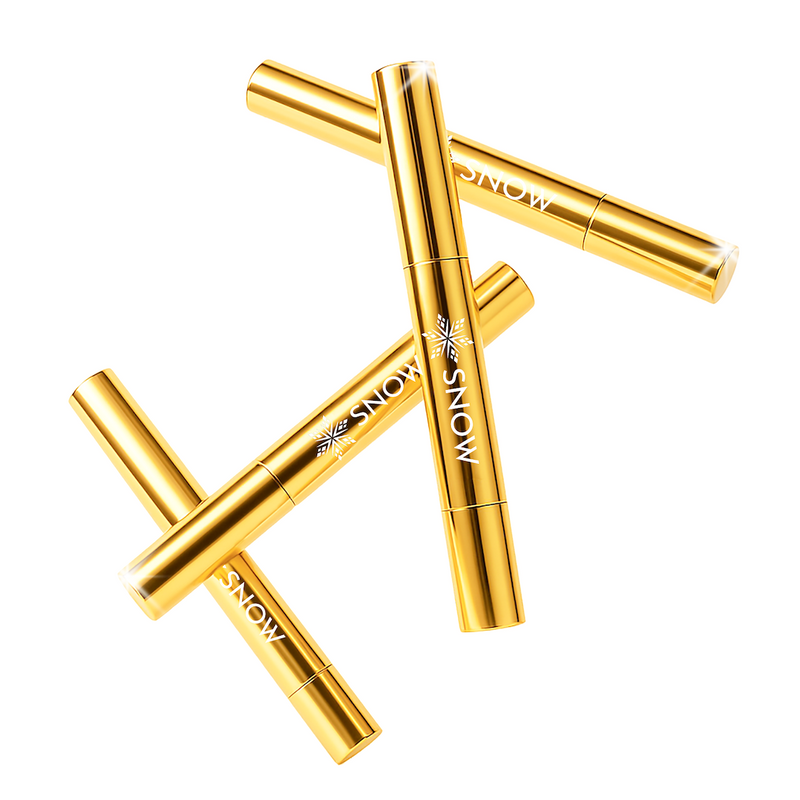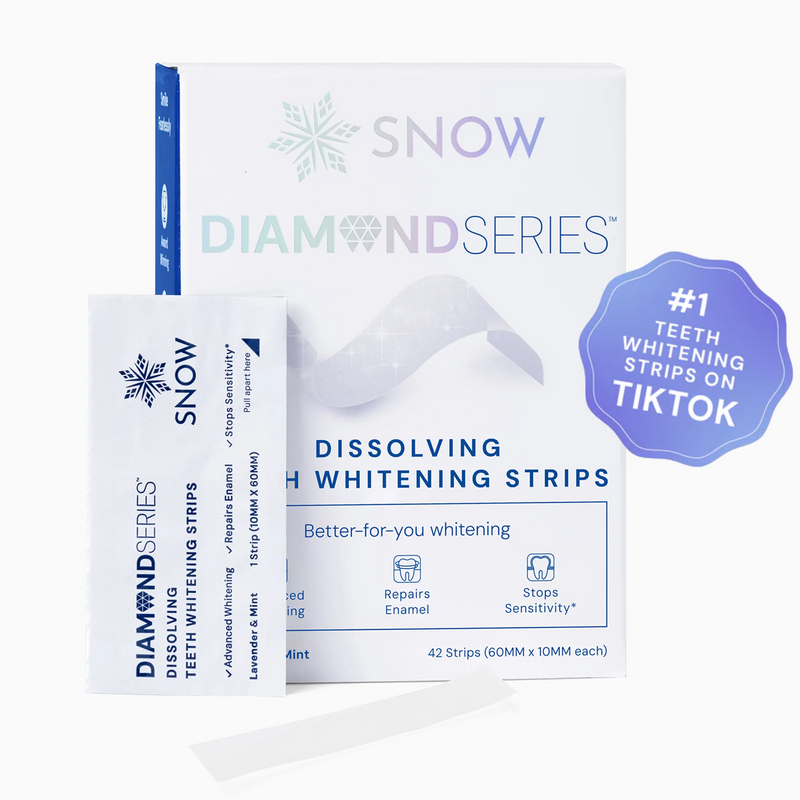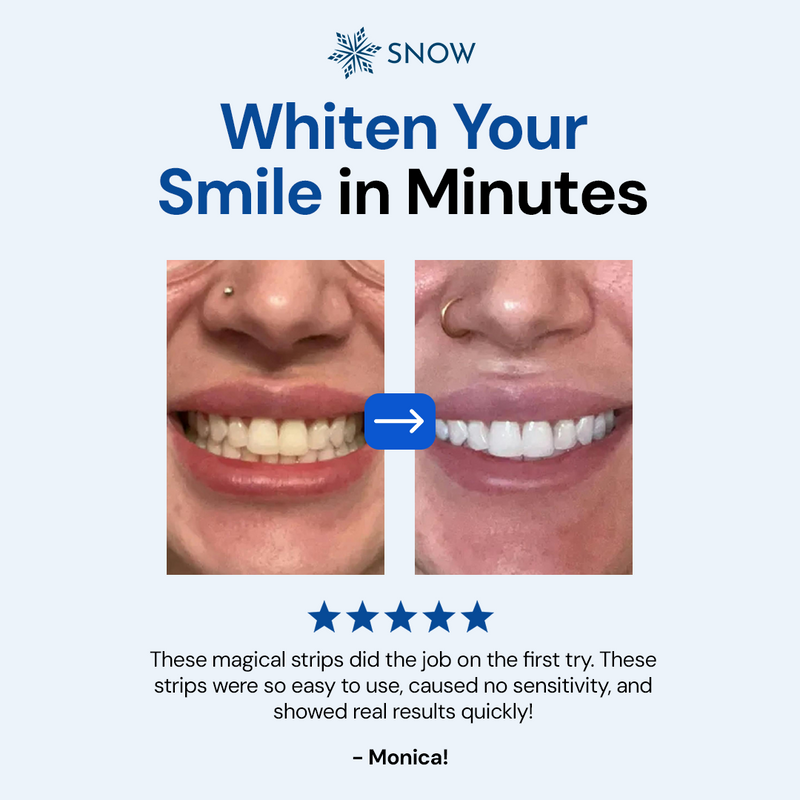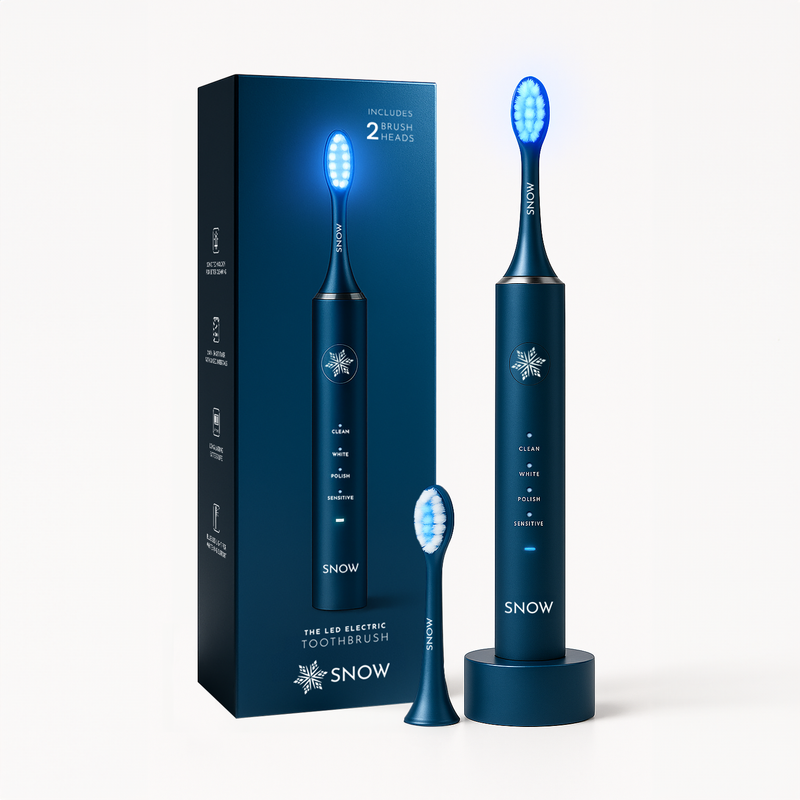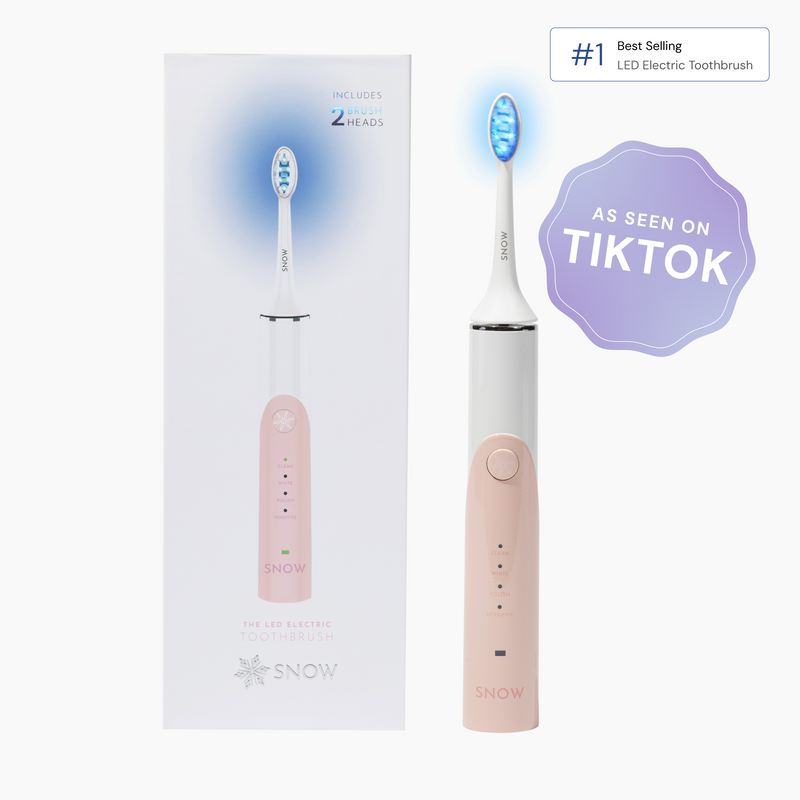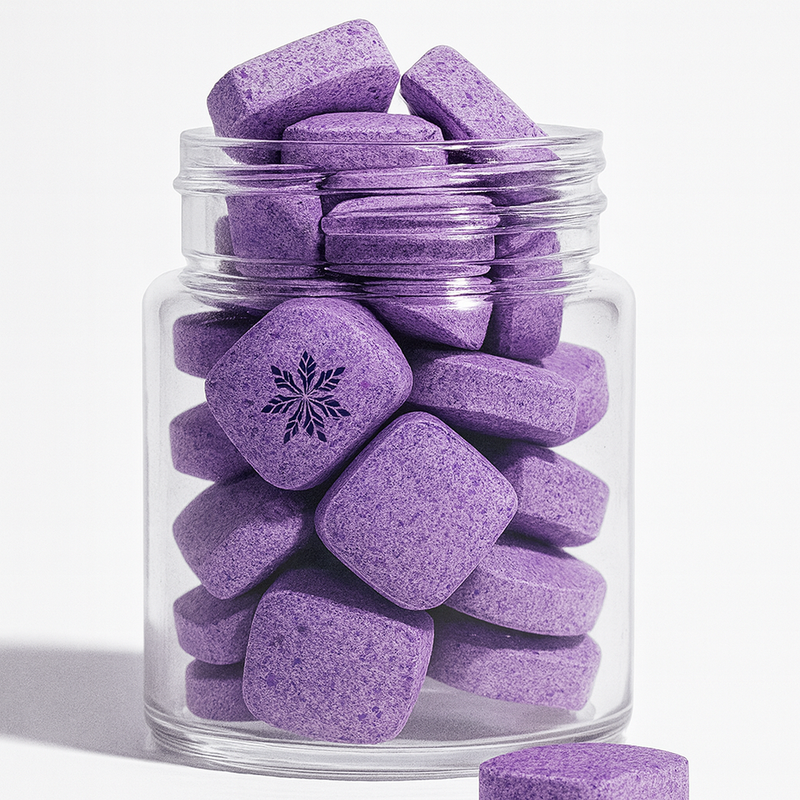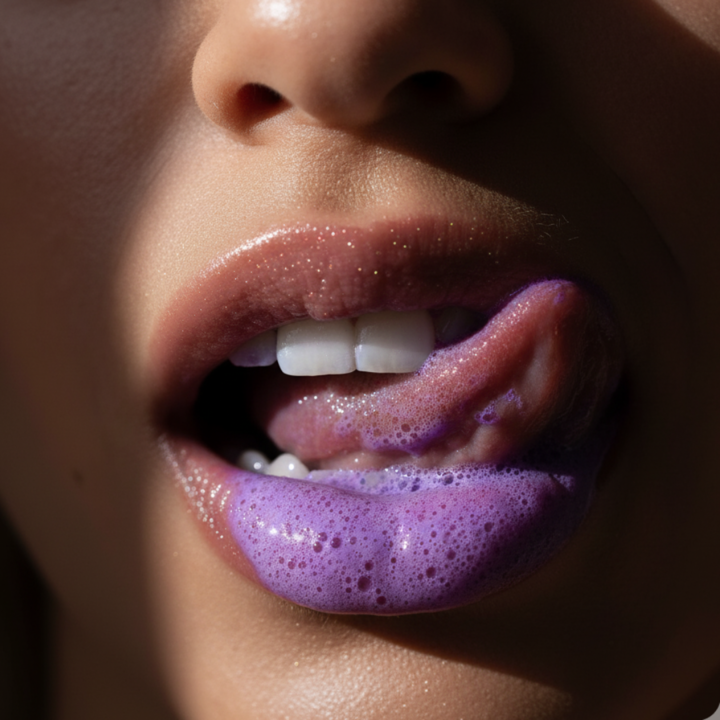Teeth whitening treatments are generally a very safe way to get that sparkling smile you've always wanted. However, there are still a handful of side effects that can occur with these kinds of products, particularly if you're not careful to follow all of the instructions provided.
Gum pain is one of the more common side effects of whitening trays and strips. This issue occurs when excess gel from the bleaching treatment begins to irritate the soft tissue in your mouth, leading to tender gums and opening the door for further issues to develop.
Fortunately, there are ways to ensure that you don't need to deal with sensitive gums in order to have a bright and beautiful smile. You just need to take a few simple precautions.
In order to help you protect your gums during your teeth whitening procedure, we've created this comprehensive guide to all you need to know.
Included is some basic information about the different types of teeth whitening methods and teeth whitening agents, some side effects to look out for, and much more. Hopefully, this will provide you with helpful information about how teeth whitening works and how you can protect your gums during the process.
WHAT IS TEETH WHITENING?
While whitening products aren’t too complex, you might be a little confused about how they work if you haven't used them before. Don't worry! We’ll explain how everything works so that you can be prepared!
Teeth whitening is a non-invasive cosmetic dental treatment intended to remove stains and discoloration from your teeth in order to give you a brighter, whiter smile. There are a few different teeth whitening products you can use to do this, most of which use one or more bleaching agents.
Bleaching agents are most often either hydrogen peroxide or carbamide peroxide. These agents are applied to the teeth — with either a whitening gel or teeth whitening strips — where they break up stains and combat discoloration.
These products can generally improve the whiteness of your teeth by several shades depending on the root cause of the staining or discoloration.
DOES TEETH WHITENING HAVE ANY SIDE EFFECTS?
While there are no major health risks involved in using teeth whitening treatments, that doesn't mean that there aren't any potential side effects that can be fairly unpleasant. Most of these are avoidable, provided you don't use too much gel or overuse the products in general, but some require extra precautions.
Below are some of the most common whitening treatment side effects to watch out for.
SENSITIVE TEETH
The hydrogen peroxide or carbamide peroxide can sometimes wear away enough of the enamel that the microscopic tubules in your teeth, which lead to the tooth's nerve endings, are exposed.
This can increase tooth sensitivity, particularly when your teeth come in contact with anything hot or cold. Fortunately, these side effects are almost always temporary.
ENAMEL DAMAGE
Your tooth enamel is the strongest substance in your entire body. However, abrasive whitening gel can eventually wear away at it enough to cause some damage. You don't have to worry about this issue, though, as long as you don't use excess gel and follow the instructions provided with your at-home kit regarding the frequency of use.
SENSITIVE GUMS
Whitening trays and whitening strips can lead to sensitive gums for the same reasons they can lead to sensitive teeth. Too much whitening gel can irritate your mouth, causing redness and gum sensitivity. It can even cause a chemical burn if you really overdo it.
But that's not all. Your irritated gums will be more susceptible to gingivitis and gum disease, which can cause a host of other issues with your oral health, including tooth sensitivity, receding gums, loose teeth, and tooth loss.
WHAT CAUSES TOOTH STAINING AND DISCOLORATION?
There are a few reasons your teeth may need to be brightened. Some of them are things you can avoid or moderate. Others are a bit trickier than that. We've listed the most common causes of tooth staining and discoloration below:
- Certain foods (berries, tomato sauce, soy sauce)
- Certain drinks (coffee, tea, wine, cola)
- Tobacco use
- Aging
- Poor oral hygiene
- Certain medications
- Traumatic dental injuries
Many of these causes of teeth staining are things that a quality whitening treatment should be able to tackle, but others require alternative forms of treatment. Consult your dentist or read on to learn more.
REASONS WHY TEETH WHITENING MAY NOT WORK
As effective as many bleaching treatments can be, none of them are perfect. Below are some instances where a whitening treatment probably won't be very helpful.
If you're using certain medications, such as high blood pressure meds, antihistamines, antipsychotics, or chemo drugs that have altered your tooth color, bleaching treatment won't work to brighten them.
Teeth whitening treatment also does not work on tooth discoloration caused by a dental injury. This is because the cause of the discoloration in dental injuries is internal, while teeth whitening only works on the external part of the teeth.
Another reason why you might not be able to get whiter teeth from bleaching trays is if you have porcelain crowns or teeth that have had cavities filled. The materials these restorations are made from don't react to tooth whitening products the way natural teeth do.
THE DIFFERENT TYPES OF WHITENING PRODUCTS
There are a few different ways in which you can brighten your teeth in the comfort of your own home. Each different teeth whitening product has its own set of pros and cons to consider, but ultimately they're all effective methods of adding some glow to your smile if used properly.
We've listed all of the different types of at-home whitening products below, along with some useful details about each.
Note: While you can get your teeth whitening from a dental professional, you shouldn't have to worry about avoiding gum irritation in that scenario, as that's (presumably) something they'll handle for you. For this reason, we're only going to cover the at-home smile-brightening options in this guide.
WHITENING TOOTHPASTE
You can opt for the simplest teeth whitening method by simply grabbing a whitening toothpaste and incorporating it into your daily oral hygiene routine. Whitening toothpaste is ineffective at combating discoloration but can tackle some significant staining.
Keep in mind, though, that the side effects we mentioned earlier still apply to these products. However, some whitening toothpaste brands contain potassium nitrate, which can help with tooth sensitivity.
WHITENING TRAYS
The whitening tray method is perhaps the most popular at-home treatment for anyone looking to add some sparkle to their smile. You simply apply the whitening gel to the tray, place it in your mouth for a prescribed amount of time, and allow the solution to work its magic.
CUSTOM FIT WHITENING TRAY
There's also an option to receive a whitening kit that uses a custom-fitted tray from a dental office.
Custom fitted trays can be highly effective, and it can be helpful to work with dental professionals when whitening your teeth. But keep in mind that these custom trays are often significantly more expensive than the over-the-counter, at-home treatment.
WHITENING STRIPS
This method uses small sections of an adhesive material containing bleaching agents, which are placed on the teeth for a certain amount of time in order to brighten their appearance.
Whitening strips are a simple treatment that will cost you significantly less than options such as custom trays, but they can cause sensitivity in both gums and teeth the same way that other whitening treatments can. They are, however, extremely popular with people looking for an affordable, effective whitening product.
THE BEST WAYS TO PROTECT YOUR GUMS DURING TEETH WHITENING
Any teeth whitening product that uses a powerful whitening agent is liable to irritate your gums and make enjoying your beautiful white smile a little more difficult.
Fortunately, there are ways to protect your gums and avoid irritation altogether. Just take a look at the following tips.
USE A DESENSITIZING GEL
This method takes a bit of a fight-fire-with-fire approach. If you anticipate that your gums will be irritated by the whitening gel, you can always use a desensitizing gel so you don't feel the irritation.
Keep in mind, though, that desensitizing gel will not prevent the whitening solution from bothering your gums. It's just going to keep you from feeling it.
USE A WEAKER WHITENING AGENT
Your whitening solution doesn't necessarily have to be strong enough to get your teeth to a powerfully bright shade on your very first whitening treatment. If you opt for something weaker, you can protect your gums while still making your teeth whiter over time.
BE SURE NOT TO USE TOO MUCH WHITENING GEL
One of the easiest ways to protect your gums from chemical burns when whitening your teeth is to avoid using excess material in your bleaching trays. This is true whether you're using an at-home kit or custom trays from the dentist's office.
Using a ton of solution is much more likely to cause painful side effects than whitening your teeth an extra shade or two, so make sure to use only the exact amount that the directions suggest.
FOLLOW THE INSTRUCTIONS
Speaking of following directions, if you really want to keep your gums safe, it’s a good idea to follow the instructions closely.
This is particularly important when it comes to frequency of use. It's not uncommon that issues caused by bleaching trays are the result of the user overdoing it, so make sure to carefully follow the instructions.
You may want to seek professional advice if you think you've overdone it when whitening your teeth. Overuse can cause problems with both your teeth and gums that may need to be treated by a dentist.
TRIM YOUR WHITENING STRIPS
A fairly common way to irritate your gums during teeth whitening is to apply whitening strips without trimming them first.
The strips are designed as a one-size-fits-all solution, meaning they will most likely be larger than you need them to be. If you don't cut them to fit over just your teeth, they can reach your gum line, and the bleach will irritate your gums.
You'll also want to avoid leaving your whitening strips on for too long, as the longer they're applied to your teeth, the more likely the bleaching agent is to reach your gums.
THE TEETH WHITENING PROCESS
After taking in all this teeth whitening information, you might be wondering exactly how the whitening tray procedure works. Read on to find out.
First, you will want to prep your teeth by brushing and flossing. Make sure they're extra clean and free of any food particles.
Next, place the amount of gel described in the instructions on the tray. This is very important if you want to avoid irritating your gums.
Then, you're going to insert the trays into your mouth. If you find that the gel has come into contact with your gums, you can gently wipe it away with a cloth.
After that, keep the tray in for as long as directed. Keeping it in any longer than recommended may result in gum soreness and possibly other dental issues.
Finally, when the time is up, you can remove the tray and immediately rinse your teeth and gums—see why mouthwash burns and how to stop it—to ensure that none of the whitening solution lingers in your mouth.
As you can see, getting brighter and more beautiful teeth at home is a fairly simple process. If you follow these tips closely, your gums should be just fine.
WHAT TO DO IF YOUR GUMS BECOME IRRITATED
If you tried your very best to keep your gums safe during your teeth whitening procedure, and you've still got some pain and tenderness, don't panic. There are a few things you can do.
First things first, stop using the treatment. Once your gums have become irritated, you will only make things worse by continuing to expose them to the bleaching solution.
Once you've put down the tray, rinse your mouth to get any leftover solution off your gums. You should rinse with salt water, as it can relieve some of the discomfort you're feeling.
If the pain is bad enough, an over-the-counter painkiller can be helpful during your recovery period.
Speaking of severe irritation, if your discomfort is significant enough that you're feeling concerned, make sure to speak with your dentist about it. Gum inflammation can lead to other issues, including gingivitis and gum disease.
Frequently Asked Questions
What to do if teeth whitening burns gums?
Usually, tooth whitening products with bleaching agents contain either hydrogen peroxide or carbamide peroxide. A study found that gum irritation is one of two common problems when using teeth whiteners with a higher concentration of bleaching agents. (Tooth sensitivity is the other problem.) Though, if used correctly, the irritation should be temporary and mild.
Can teeth whitening damage your gums?
The good news is that gum inflammation normally heals on its own within a few days if the bleaching procedure is stopped soon. Saltwater rinses will help you feel better during your rehabilitation. Over-the-counter pain medications can be used to lessen the discomfort or burning sensation if necessary.
Does teeth whitening make your gums recede?
Bleaching products can have multiple side effects, such as damaging the dental enamel (if used excessively), irritating the gums, tooth sensitivity, and more. Gums typically recede due to gingivitis or genetics. If you suspect it's the teeth whitening products you're using, consult your dentist.
What happens if teeth whitening gel gets on gums?
Prolonged exposure to teeth whitening gels or solution on the gum tissue also may result in the inflammation and redness of the areas affected by the whitening solution.
How can I fix my burnt gums after teeth whitening?
As long as you stop the bleaching treatment quickly, gum irritation usually resolves independently after a few days. Saltwater rinses will help you feel better during your rehabilitation. If necessary, over-the-counter pain medications can be used to lessen the discomfort or burning sensation.
AT HOME TEETH WHITENING WITH SNOW
If you're interested in achieving the brightest, whitest smile possible, take a look at SNOW's line of premium at-home teeth whitening products.

















































